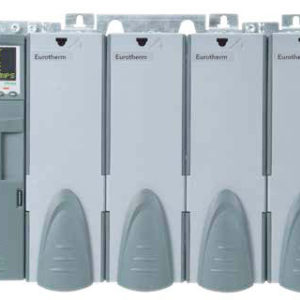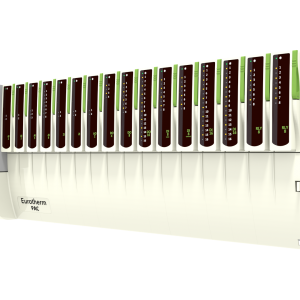A collective effort
New furnace designs will unavoidably need modelling studies carried out, resulting in glass resistivity assumptions which, in turn will impact transformer design and cost. Mistakes in transformer specification and design are difficult to correct and over-engineering systems, to limit design risks, is both expensive and contrary to the goal of reducing environmental impact. The world’s furnace builders and designers should be aware of the flexibility that modern power control systems are capable of providing. Because, with or without the help of the few companies providing furnace modelling expertise, this flexibility will help them find the most cost and energy efficient electrode positioning for the process.
Furnace and electrical power supply designs are mainly based on physics and there are lots of parameters that affect each other. Furnace builders are well respected for their furnace design capabilities, but power solution providers such as Eurotherm by Schneider Electric should be considered the power supply experts, having decades of history in specifying, designing, engineering and installing SCR controlled systems, along with the associated products and components. As the industry steps up to +10MW of installed electrical power, technical knowhow is imperative whether for an all-electric or hybrid furnace design. Therefore, furnace building and power supply expertise should now be combined together to achieve efficient glass manufacturing melting systems. Each party can provide their knowledge and IP which will minimise the risk of failure of the whole furnace design. The way the energy is deployed from the grid to the electrodes is crucial. Therefore, the efficiency of the complete system, grid stability, personal safety and availability of the furnace are highly dependent on the selected power control system. Common sense dictates that this kind of knowledge can only come from an experienced power solution provider.
Installation of +10MW power supplies will also change the way utilities can be managed. Microgrid and smart grid power supply capabilities will put glass manufacturers’ energy purchasing departments in a much better position to negotiate energy contracts. For example, by utilising the freedom of electrical power control to help stabilize increasingly unstable electrical grids and getting lower energy tariffs in return. With a +10MW installed supply, it makes absolute sense to combine glass manufacturers’, furnace builders’, power supply providers’ and energy utilities’ business cases to find win-win situations through collaboration: taking advantage of the best of multiple worlds with each party contributing their skillset. The bottom line is that with increasing power demand, both size and expertise matter!


 EPower™ Thyristorsteller
EPower™ Thyristorsteller  T2750 PAC
T2750 PAC  EFit Einphasen Thyristorsteller
EFit Einphasen Thyristorsteller 



